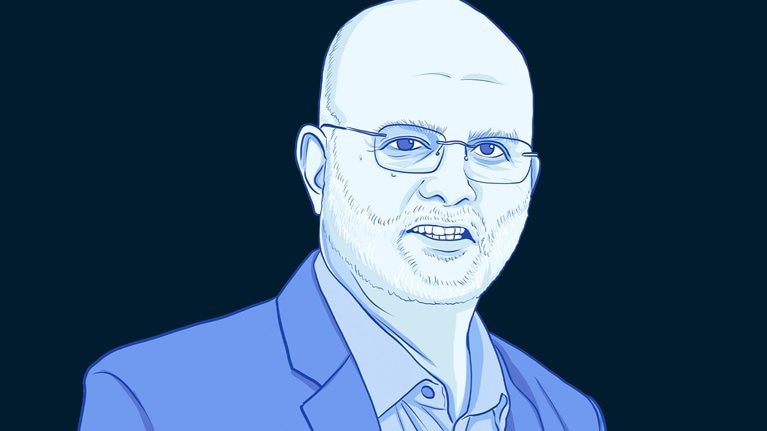In this episode of The Venture, we talk with circulee CEO and cofounder Thomas Gros about creating a digital-first company and taking it to market within six months of deciding to build a business in a new category—providing pre-owned digital hardware to small and medium-size enterprises (SMEs). The German start-up offers SMEs a green and cost-effective alternative to new IT devices by supplying professionally tested and warrantied hardware previously leased by large corporates. In speaking with McKinsey’s Tomas Laboutka, Gros discusses introducing a circular business model to a new market and how the backing of a corporate investor with resources and a long-term vision has enabled early positive results and support for attracting the right talent.
An edited transcript of the podcast follows. For more conversations on venture building, subscribe to the series on Apple Podcasts or Spotify.
Podcast transcript
Andrew Roth: From Leap by McKinsey, our business-building practice, I’m Andrew Roth, and welcome to The Venture, a series featuring conversations with legendary venture builders about how to design, launch, and scale new businesses. In each episode, we cut through the noise to bring practical advice on how leaders can build successful businesses from scratch.
In this episode, we share a conversation with Thomas Gros, CEO and cofounder of circulee, a Berlin-based distributor of pre-owned digital hardware. The German start-up provides smaller businesses with a green and cost-effective alternative to new IT devices, offering them professionally tested and warrantied hardware previously leased by large corporates. Gros sat down with McKinsey’s Tomas Laboutka to discuss the central importance of the circular business model, the challenges of pioneering a new business category, and the advantages of being backed by a corporate investor with a ready supply of high-quality pre-owned devices.
Tomas Laboutka: Welcome, Thomas. It’s a pleasure to have you join us.
Thomas Gros: Thanks, Tomas. It is nice to have the chance to talk with you.
Tomas Laboutka: Jumping right in, could you explain how the circular economy has a role to play in solving the climate crisis?
Thomas Gros: Our climate crisis is obviously driven to a large extent by CO2 emissions across a number of industries. And there’s only so much we can do in terms of producing what we need with more efficient processes to reduce those CO2 emissions. So we need to do more than just curb emissions or consumption.
We need to become more efficient in reusing our resources—consuming fewer rare metals or precious minerals, for example. That’s a big part of our climate-change battle: learning how to use and reuse our resources and make more out of them for the sake of the planet. That’s why circular business models are required in many industries.
Tomas Laboutka: That’s quite interesting. I know this resonates with many consumers—using less, doing your part, and ultimately fueling the circular economy. It’s something that is top of mind in many countries. However, you’re building a B2B business. How does that resonate with this segment, and what’s the opportunity here?
Thomas Gros: Our company effectively extends the lifetime of IT devices like laptops, phones, monitors, and so forth. And this category of products—the tools we all need to do our work—has been slow to move to a reuse or a circular model. If you were to compare it to cars, the used-car market is well established, with consumers and businesses accustomed to buying them.
But it hasn’t become normal in the IT hardware space. While businesses have been slower to move to a pre-owned IT hardware market, consumers have, in fact, been leading the way in terms of reuse or lifetime extension through a partial ownership model. Consumers have been buying pre-owned IT hardware for quite some time, but businesses have been slower to follow suit. When you look at the business landscape, especially in Europe, corporates still rely heavily on new devices to equip their employees. It’s rather rare for companies to really lean into pre-owned IT hardware.
There are specific reasons for this, with the first being that companies need IT hardware that works. Second, it’s not an area where they typically look for cost savings. It’s also one of those areas where employers believe equipping employees with new devices shows them extra appreciation. Imagine you’re an employee at a company getting a device that looks like it’s been used for quite some time. You’d likely be less excited about your hardware than if it were brand-new.
So ultimately, what’s keeping businesses from leaning into the pre-owned opportunity comes down to risk aversion or inconvenience. And this is exactly what we’re trying to change with circulee. We’re trying to make the entire process—and the quality of pre-owned IT hardware—so good that it becomes as easy as buying and deploying new hardware. That’s really where the magic and our impact come in, by making this path so simple and convenient that it effectively becomes a choice you can no longer avoid or ignore.
And we’re seeing some really encouraging first results after almost a year of operation, with businesses opening up to the idea. We can talk about some of the reasons why, but we believe that with circulee, we have an offering that is working for businesses, and we’re seeing them taking the leap of faith and being rewarded for it.
Tomas Laboutka: This sounds like a really interesting story, which we’ll explore further, but you just spoke about some very high barriers to entry. This will be almost a trillion-dollar market by 2030, so there’s clearly an opportunity to tap into. How did you begin this journey?
Thomas Gros: There’s one big barrier to entry into this specific market, and that’s access to high-quality pre-owned devices. The idea for circulee came about when I was serving as a consultant to a large IT leasing company that effectively had this idea to reuse devices being returned to them. They were typically leasing devices to large corporate clients for approximately two years, and then when they were returned, they were selling these devices off to brokers.
We saw an opportunity to create a distinct and high-quality offering for pre-owned IT hardware for the small to medium-size business segment, which was not being served. Large companies have access to leasing, use the hardware for a certain amount of time, and then have the flexibility to either buy it, continue leasing it, or switch to newer devices. But smaller and medium-size businesses often don’t have access to this leasing opportunity, partly because of credit or financial default risk but also because they don’t want to commit to contracts that lock them in for longer periods of time.
Then there’s another reason, which is the size of internal use pools. The larger the company, the more likely they will have their own internal pool of used IT devices. If you’re a small company, you’re not going to have a large pool, and every new employee will likely require a new device. So we see the SME segment as an underserved market with huge potential. And if you think about the size of that market, that is where you have the biggest opportunity to create an environmental impact.
For my client, it was an opportunity to build a digital-first company. On the other side, it was leaning into an opportunity to create an environmental impact. And for them strategically, it was an opportunity to extend the value chain: rather than selling off returned devices to brokers, you quality-test them and add a service model to serve other businesses.
This was the opportunity, and once we got started, we had the chance to move very, very fast. Working with a client who was determined to go after this opportunity with the appropriate resources allowed us to essentially build circulee and get it to market within six months after deciding to build the business.
Tomas Laboutka: That’s unprecedented speed. It sounds like the client—and now your partner—saw that they have unique assets and a value chain they can extend. And you saw a huge market where you could make a sizeable environmental impact and build a digital-first business. One of the advantages you have is resources. If you were to go and try to build this business on your own, it would be very hard to raise funds, since the conditions are not ideal right now. Can you share a bit more on resourcing and what it’s helping you to unlock?
Thomas Gros: I think you’re spot-on. Right now, the environment is very challenging for entrepreneurs and businesses in that initial phase where they’re building the business, improving the business model, and will eventually require more capital to scale the business. We’re lucky we don’t have to fight for funds or spend time fundraising.
In fact, we can spend the majority of our time building the business. And that’s because we set up a business plan early on with our client’s leadership team that was quite realistic in terms of the resources we needed. Obviously, we also went through scenarios that would require more resources than initially planned. So overall, we did a good amount of the planning and up-front expectation setting required to get such a business off the ground.
The other part is access to these devices and working capital. In order to serve businesses effectively with pre-owned IT hardware, you need to hold inventory, which means having a significant amount of devices on hand in order to fulfill demand fast enough. Because once a business decides to buy hardware, there’s typically an acute need.
Another advantage we enjoy is the fact that this company has a long-term vision. For them, it’s strategically important, so they don’t think about it like an investor or venture capitalist, who would have very clear timing expectations in terms of realizing a return. This company is in it for the long run, and this is the type of business where you need time in order to ultimately create a category.
Because effectively, that’s what we’re doing: creating a new category—offering the highest-quality pre-owned IT hardware for businesses. And that takes time. It takes time to convince customers, and it also takes time to build and perfect the supply chain to ensure a constant and sufficient supply of devices. Once you have those things, you create an impact. You have the chance to build a new category, but it takes time, it takes vision, and it takes breadth.
Going back to your question, if I and a group of people decided to go out on our own and try to raise capital right now, I’d be quite nervous.
Tomas Laboutka: I think nervous might be an understatement. But you might be on the other side of the spectrum here because you’re building a new category, have the necessary resources, and your partner is in it for the long run.
Thomas Gros: That’s right.
Tomas Laboutka: This is really exciting, because it enables you to focus on different battles, and as a venture builder, as a founder, you have so many battles to fight all at once. But you still have to bring in talent to ultimately fulfill this long-term vision you are shaping as you build a new category. How are you thinking about this? How do you tap into the best talent required to build something so unique and special?
Thomas Gros: It’s an important question. And you just hit on the fact that even though we have backing by a company with resources and a long-term vision, that doesn’t mean we’re free of expectations. Of course, our backer expects us to deliver results. The big difference is their long-term vision, their breadth, and their strategic rationale. That said, we have pressure, we have a plan, and that plan is ambitious. In order to realize this plan, we need great people with the right mindset and the right skill set.
Despite having resources and the backing of a strategic investor, it’s been challenging for us to source the right talent and bring them on board fast enough. Quite frankly, it’s probably one of our most important bottlenecks for growth and scalability. There are a couple of areas where we’re really feeling the constraints and competition in the talent market. One is finding engineers who have the right technical background and the right mindset and who know how to work in a very early-stage agile environment.
The other area that’s been more surprising to me is sales. Obviously, we have a big sales task, and we need to convince more than just decision makers of companies. We also need to overcome the scrutiny and risk aversion of IT administrators, who often tend to be the gatekeepers. So you need salespeople who are passionate and understand the technical aspects of the product and service we’re delivering. And you need them to be ready to jump in now.
The competition for people with B2B sales experience is quite intense, and we’ve been struggling to find people with the right mindset and experience who are ready to join right away. We’re developing plans and strategies to overcome those bottlenecks, but I must admit it’s been a very real challenge.
Tomas Laboutka: I can only imagine. I’m quite interested to hear what works for you and what helps you set yourself apart. You have the resources, the backer, and the existing business, and I imagine some candidates would be more apt to join a new venture with such a solid and long-term-oriented partner. I also imagine there’s a sustainability component to it. What helps you set yourself apart from the crowd?
Thomas Gros: Yes, we have the ability to look into candidates’ eyes and say, “We have the capital secured; we are funded.” We all know this happens a lot during interviews, and in the end, the reality often is very different. But in our case, we actually can tell them that we have the resources to operate and scale.
You just touched on the other part, the impact potential and our purpose, which is to make the world more sustainable. And we do this using a model with very few downsides for businesses, because we deliver cost savings, high convenience, and a product and a service that works for them. Hopefully, over time, our clients will understand that this is a no-regrets way to go.
As for recruiting talent, we do find it easier to engage with potential talent thanks to our mission, because we deliver real impact. And we’re already able to demonstrate and discuss very concrete impact numbers after less than a year in business. That, of course, helps us convince talent to join us.
That said, talent has many options to choose from. And purpose can be found in areas other than sustainability. That means we’re not free from competition. We need to have a very thorough employee value proposition, a proper recruiting process, and be fast in making offers to the right people.
Tomas Laboutka: This is all very exciting, and yet it sounds like there is still quite a hill for you to climb on the talent front.
Thomas Gros: That’s right, but there’s one other point I didn’t mention, which I think is actually quite important. When we decided with our backer investor to launch the business and build a great team quickly, we made sure we were able to give every employee equity. But because it’s technically and legally difficult to give everyone real equity, we created virtual equity, which mirrors the cap table and gives us the opportunity to have every employee participate in the financial outcomes of the company.
I think that’s a really important asset and argument in the talent market, especially in Europe, where very few companies give equity to their early employees systematically. It’s not part of the business culture, not pushed by venture-capital firms, and the legal environment is not conducive to it. But we worked hard to find a solution that gives us the opportunity to let everyone participate in the long-term outcomes of the company. And I strongly believe that’s a big asset that will make a difference over time as we recruit talent.
Tomas Laboutka: That really resonates, and you’re doing important work on the innovation front, introducing virtual equity that mirrors your own. It sounds like you are building the business, as you mentioned, digital-first. These learnings are very interesting, and this is a very exciting journey you’re on. Thanks for sharing, Thomas.
Thomas Gros: Thank you, Tomas.
Andrew Roth: You have been listening to The Venture. If you like what you’ve heard, subscribe to our show on Apple Podcasts, Spotify, or wherever you listen.


